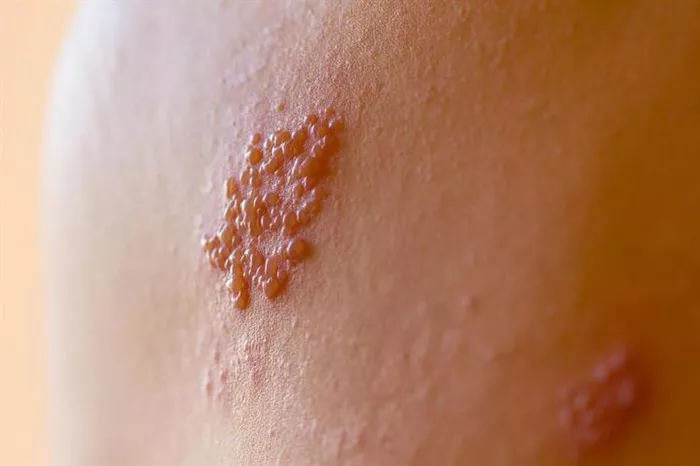In the intricate realm of infectious diseases, few entities possess the mystique and clinical significance of the varicella-zoster virus (VZV), commonly known as the zoster virus. This pathogen, belonging to the Herpesviridae family, manifests in two distinct clinical forms: varicella (chickenpox) and herpes zoster (shingles). While varicella is typically associated with childhood infection, herpes zoster emerges as a consequence of VZV reactivation in adults, often presenting as a painful rash along a specific dermatome. Unveiling the complexities surrounding the zoster virus is pivotal in understanding its pathogenesis, clinical manifestations, and therapeutic interventions.
Pathogenesis and Transmission
Central to comprehending the zoster virus is grasping its intricate pathogenesis. Primary infection with VZV typically occurs through respiratory droplets or direct contact with vesicular fluid from an active lesion. Following initial exposure, the virus establishes latency within sensory ganglia, predominantly the dorsal root ganglia and cranial nerve ganglia. Latent VZV persists lifelong within these neuronal cells, evading immune surveillance while maintaining the potential for reactivation.
The triggers for VZV reactivation remain multifactorial and incompletely understood. Age-related decline in cellular immunity, immunosuppression due to conditions such as HIV/AIDS or immunosuppressive therapy, and psychological stressors are recognized predisposing factors. Furthermore, the waning of VZV-specific cellular immunity over time contributes to the decline in viral control, facilitating viral reactivation and subsequent herpes zoster development.
Clinical Manifestations
The clinical manifestations of VZV infection encompass two distinct entities: varicella and herpes zoster. Varicella, primarily affecting children, manifests as a generalized pruritic vesicular rash accompanied by low-grade fever and malaise. Conversely, herpes zoster presents as a localized painful vesicular rash distributed along a specific dermatome, corresponding to the affected sensory nerve. The pain associated with herpes zoster often precedes the rash by several days and can persist long after the resolution of cutaneous lesions, a phenomenon known as post-herpetic neuralgia.
The dermatomal distribution of herpes zoster is a consequence of VZV reactivation within specific sensory ganglia, highlighting the virus’s neurotropic nature. The thoracic dermatomes are the most frequently involved, followed by the cervical and trigeminal regions. However, herpes zoster can manifest in any dermatome, leading to a diverse clinical presentation.
Complications and Sequelae
While herpes zoster typically resolves within a few weeks, various complications may ensue, particularly in vulnerable populations. Post-herpetic neuralgia, characterized by persistent neuropathic pain lasting beyond three months post-rash resolution, represents the most common and debilitating sequela of herpes zoster. Other complications include bacterial superinfection of cutaneous lesions, ocular involvement leading to keratitis or uveitis, and neurological complications such as cranial nerve palsies or myelitis.
Immunocompromised individuals, including those with HIV/AIDS or recipients of immunosuppressive therapy, are at heightened risk of disseminated VZV infection. Disseminated herpes zoster, characterized by widespread cutaneous involvement and visceral organ dissemination, heralds a grave prognosis and necessitates prompt antiviral therapy initiation.
Management Strategies
Effective management of VZV infection entails a multifaceted approach aimed at alleviating symptoms, preventing complications, and mitigating disease transmission. Antiviral therapy represents the cornerstone of herpes zoster management, with oral acyclovir, valacyclovir, and famciclovir serving as first-line agents. Early initiation of antiviral therapy within 72 hours of rash onset attenuates disease severity, accelerates rash resolution, and diminishes the risk of post-herpetic neuralgia development.
Adjunctive therapies, including analgesics, topical agents such as capsaicin or lidocaine patches, and tricyclic antidepressants or anticonvulsants for neuropathic pain management, play a crucial role in enhancing patient comfort and quality of life. Additionally, vaccination against VZV represents a pivotal preventive strategy, with the live attenuated varicella vaccine and the recombinant zoster vaccine garnering widespread adoption.
Conclusion
In conclusion, the varicella-zoster virus epitomizes the intricate interplay between host immunity and viral pathogenesis. From its initial encounter during childhood varicella to the potential resurgence in adulthood as herpes zoster, VZV’s clinical ramifications are far-reaching and diverse. By unraveling the enigmatic nature of the zoster virus, healthcare professionals can devise comprehensive management strategies aimed at ameliorating disease burden and improving patient outcomes. Through ongoing research endeavors and public health initiatives, the quest to combat VZV-associated morbidity and mortality remains steadfast, underscoring the paramount importance of understanding and addressing this ubiquitous pathogen.

























